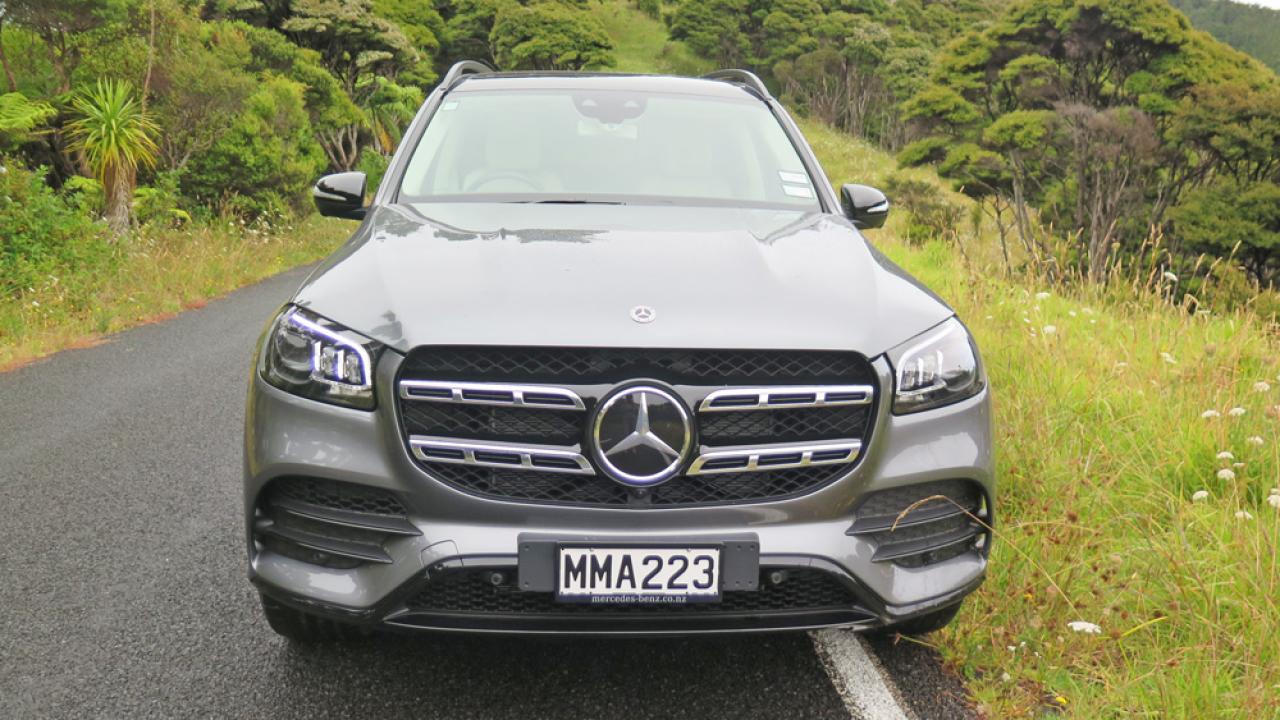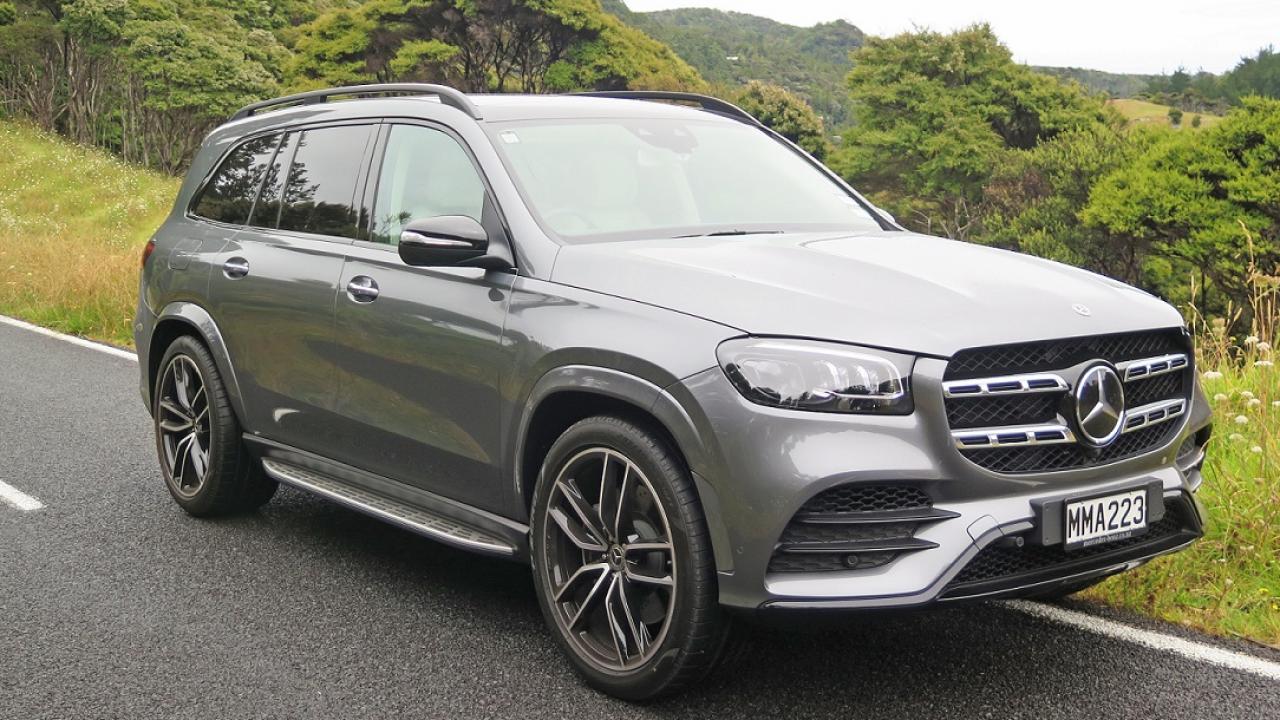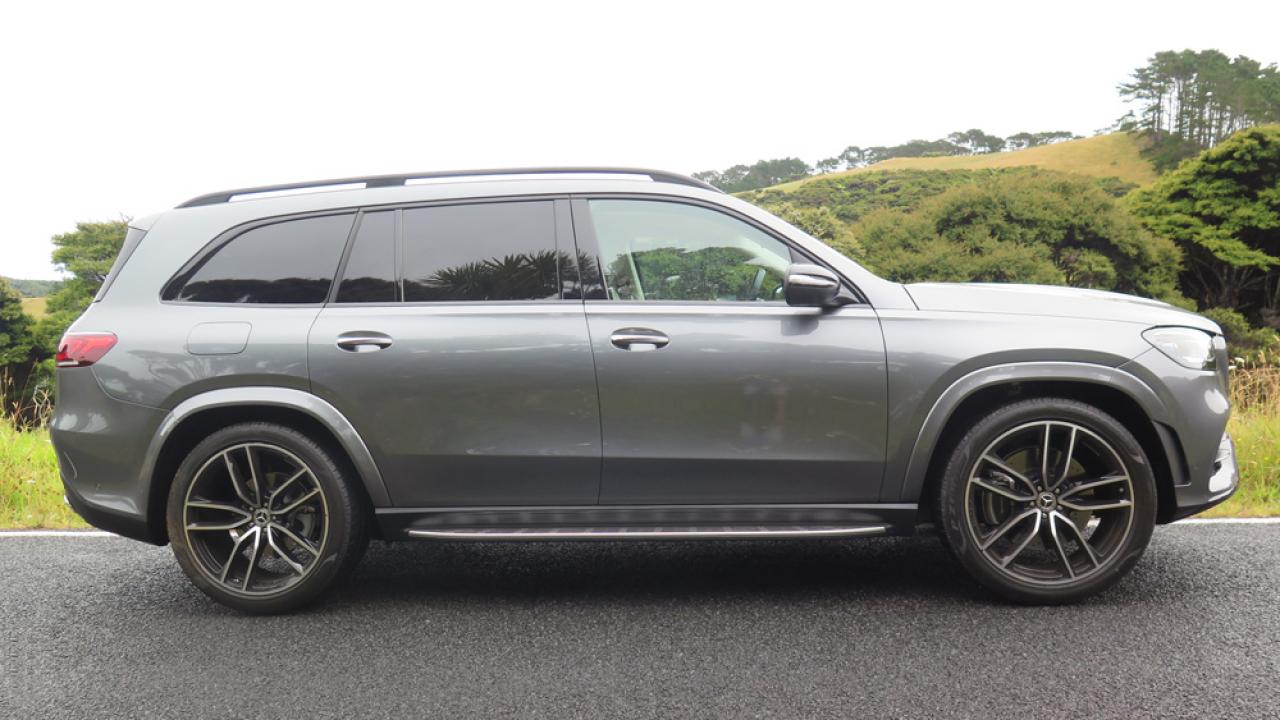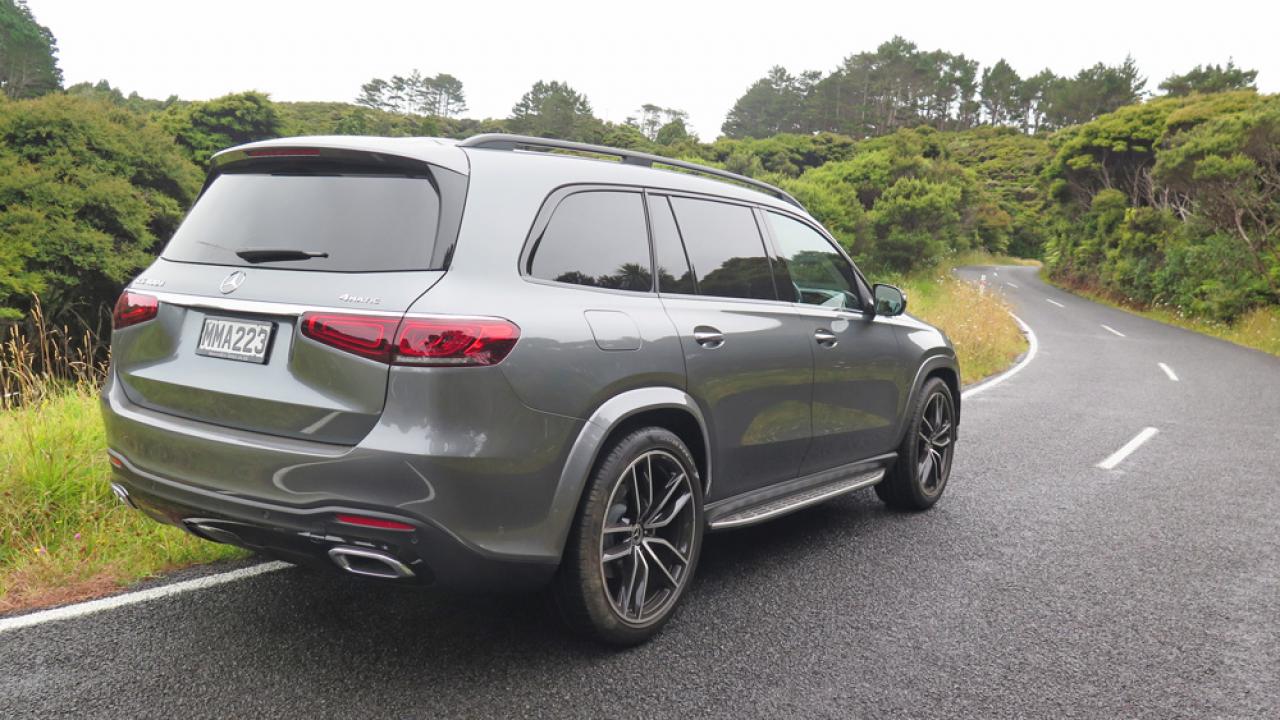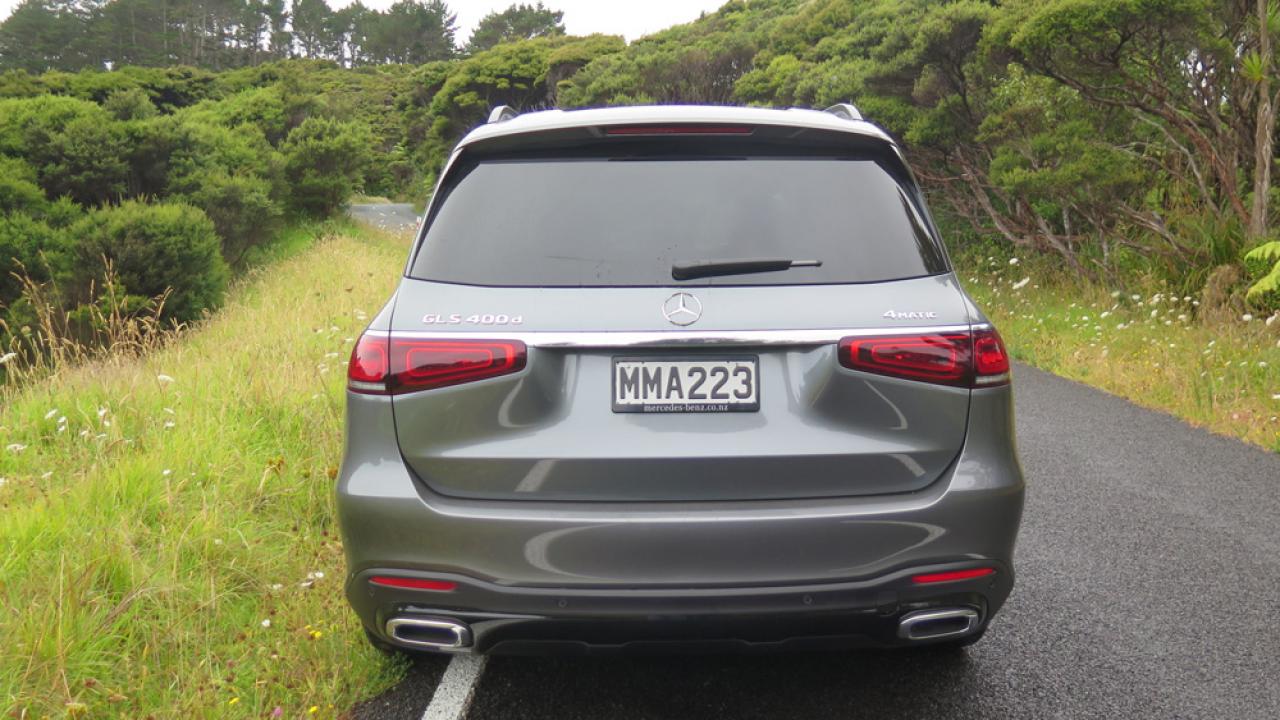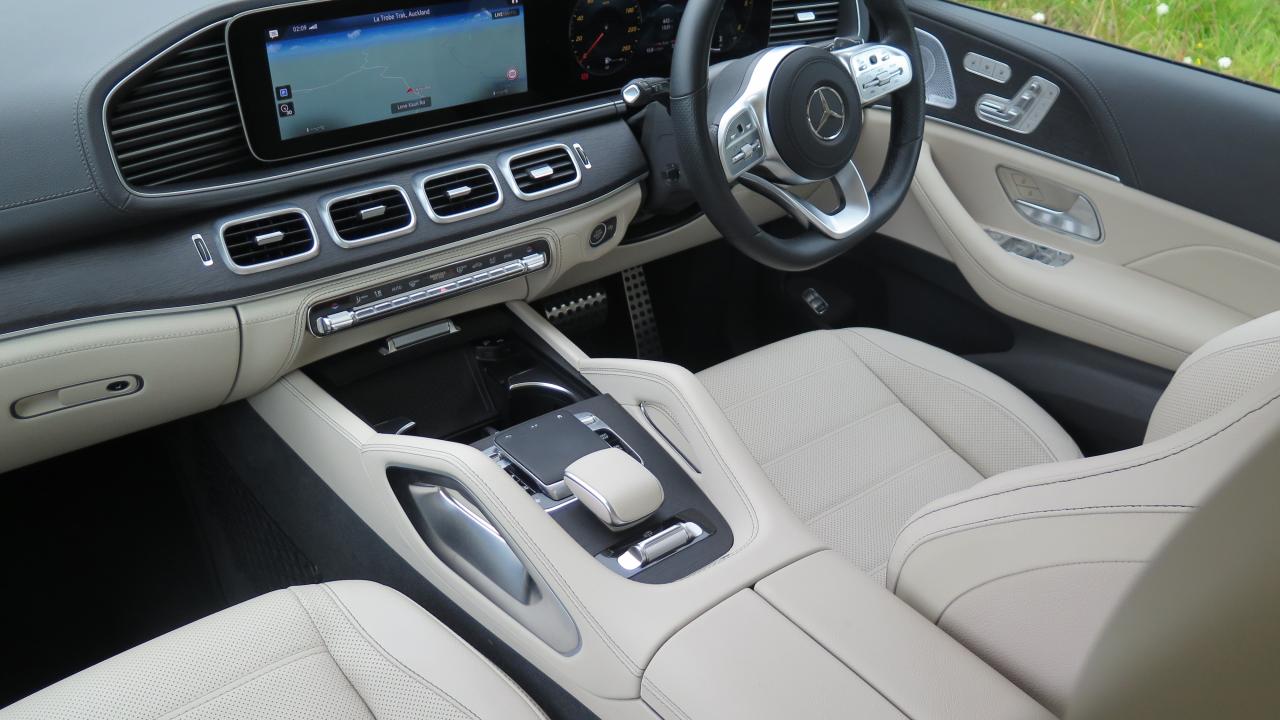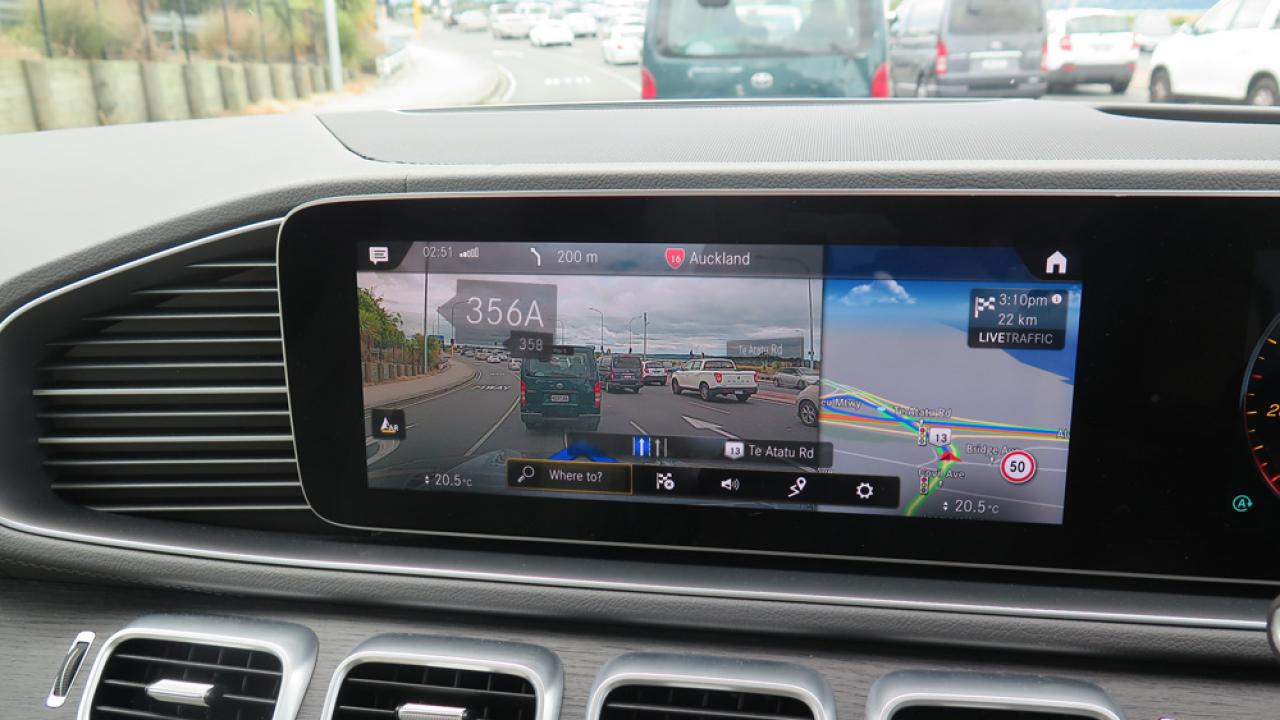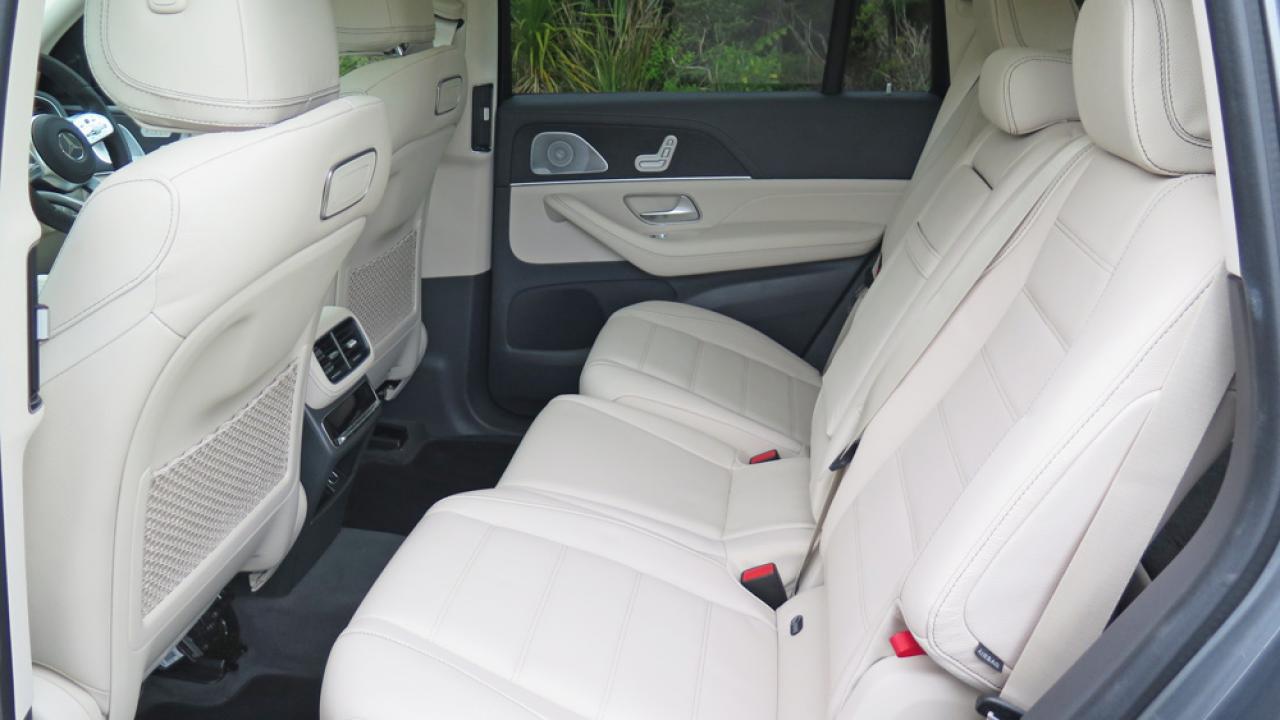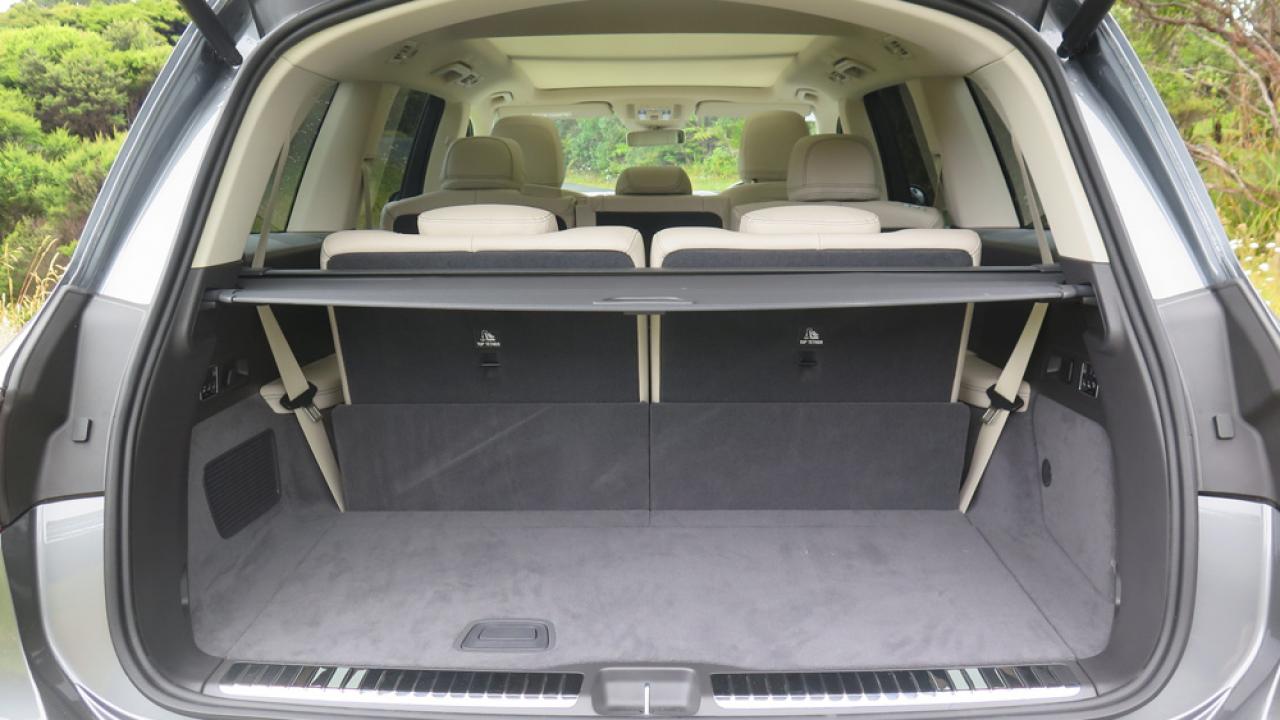For the new GLS has grown, it’s 77mm longer, 22mm wider and with a wheelbase 60mm longer, and it looks humungous.
The payoff comes inside: this is a seven-seater which truly will seat seven adults. Mercedes says the row-two seats fit passengers up to two metres tall, with passengers up to 1.94 metres in the third row. We didn’t have a tester tall enough to try it, but our 1.67-metre staffer found the third row comfy enough in terms of leg and head room – 1.94m might be pushing it – and that extra wheelbase length certainly makes it easier access to it.
Head round the back and with six passengers aboard the boot delivers 355 litres to the top of the backrest, 20 more than before. Fold row three, and you’re up to 890 litres, fold row two as well and it’s 1470 litres. Pressed for space and tempted to load it to the roof? You’ve got 2400 litres to play with.
Folding them proved easy, even for our relatively compact tester, though this is a tall vehicle, and those seats are pretty substantial. But you don’t pay over $150k just for looks. The third row folds dead flat or lifts at the touch of a button, row two slides forward and tilts for rear access (even the front passenger seat slides forward) via a single button, or folds/lifts with another. And out back you can ask the car to sink on its suspension to lower the boot lip. Clearly some of Merc’s designers really do think outside the average-sized male frame.
As for comfort and convenience functions, some are fabulous. Two 12.3-inch digital displays include a touchscreen and voice activation, with further improvements to the ‘Hey Mercedes’ voice control tech. This GLS is the first car to recognize a Maori placename we use as a tester as it stumped all others until now. You can even adjust the seat massagers using voice alone, and with a far smaller array of verbal commands to get there.
As well as now fairly common features like traffic light assist, the touchscreen menus let you adjust a wide array of functions, starting with the ambient lighting colours – there are 64 (!) choices, apparently. You can enter your height into the set-up and the wheel, seats and very comprehensive head-up display will all adjust to suit, every time you get in. You can even have a seat massage – there are a number of types to choose from – while warm or cool air wafts onto your rear. There’s a huge range of sound adjustment for the 13-speaker 590-watt Burmester surround sound system, plus four-zone climate control, six USB charging ports for the rear rows and a data-enabled one up front. We can’t list everything without getting boring – suffice it to say, a GLS owner will have very little to complain about.
Not even the cost of fuel…
The engine is a 2.9-litre in-line six-cylinder turbo diesel with a nine-speed auto and all-wheel-drive. The impressive torque figure briskly pulls it away from the line or out of corners, without too much aural intrusion, and it’s quiet at cruise. Claimed economy is 7.7l/100km, we saw closer to 9.1, admittedly after a lot of hill driving and not much highway.
Those hill roads were narrow and lumpy, and though the adaptive air suspension did iron out the worst of it, you’re still aware this is a large, 2.5-ton vehicle. You’re also aware of that when cornering, though it manages ably enough given its size, ‘agile’ isn’t the first word that comes to mind, while the lane keeping technology seemed over-keen to jerk the wheel away from the verge. It’s a boon when undertaking long trips or boring motorways, as it dramatically reduces your chances of zoning out and drifting onto the verge. But on tiny back roads we turned it off, to avoid the car’s electronic nannies twitching the wheel too vigorously on a narrow section with oncoming traffic.
Being a Merc, the GLS has an array of potential cost options, and this car includes those wheels ($2100), the metallic paint ($2100), the Innovation Package (Interior Assist, Satnav Augmented Reality and full-screen Satnav display in the instrument cluster, $800), the Night package (radiator louvre in high-gloss black along with other exterior flourishes, AMG exterior trim additions, $2500), and the Tyre Pressure Monitoring system ($850) to take the total price from $166,700 to $175,050. It could be worse – the off-road engineering package with low range adds $3500, a towbar $1900, the anti-theft alarm and tow-away protection another $1000, electric sunblinds $1300 – and E-Active body control continuously adjusting the suspenders an eye-watering $13,000, especially considering how well controlled ride is already.
Given the steady shift from passenger cars to SUVs, it’s no wonder Merc paid so much attention to this SUV. It’s a whisker shorter than Mitsubishi’s Triton ute but taller, some 34cm taller than the S-class it arguably pitches against.
The sedan fights back – as does any equivalent sedan – by feeling more confident and capable when you’re driving as long, that is, as you stick to the seal.
Competitors? If you’ve decided on an SUV, BMW’s X7 is the logical alternative – assuming you need the space, and are willing to compromise on everyday livability. This thing feels like a bit of a liability in any parking building despite the comprehensive parking aids, and even fills most parking spaces a touch too snugly.
It’s not often we can say this, but if the size offends, consider scaling down, and checking out a Range Rover…
|
At a glance |
|
|
Models |
Mercedes-Benz GLS |
|
Engine |
2925cc six-cylinder turbo-diesel |
|
Price |
$175,050 as tested ($166,700 standard) |
|
ANCAP safety rating |
TBC |
|
Power and Torque |
243kW at 3600 to 4200rpm and 700Nm at 1200 to 3200rpm |
|
Transmission |
Nine-speed auto |
|
Fuel economy |
7.7l/100km |
|
Towing capacity |
3500kg (with towbar package) |
|
2WD/4WD/AWD |
AWD |
|
Seating capacity |
7 |
|
Luggage capacity/payload |
355 litres, 890 litres with row three folded, 1,470 litres with row two folded, or 2,400 litres with rows two and three folded, loaded to roof |
Safety systems
- Blind Spot Assist
- Active Lane Keeping and Lane Change Assist
- Rear Cross Traffic Alert
- Adaptive brake with hold, brake drying and brake priming
- Attention Assist fatigue alert
- Cruise control with Speedtronic
- Distronic plus with Active Distance Assist and Steer Assist
- Evasive Steering Assist

